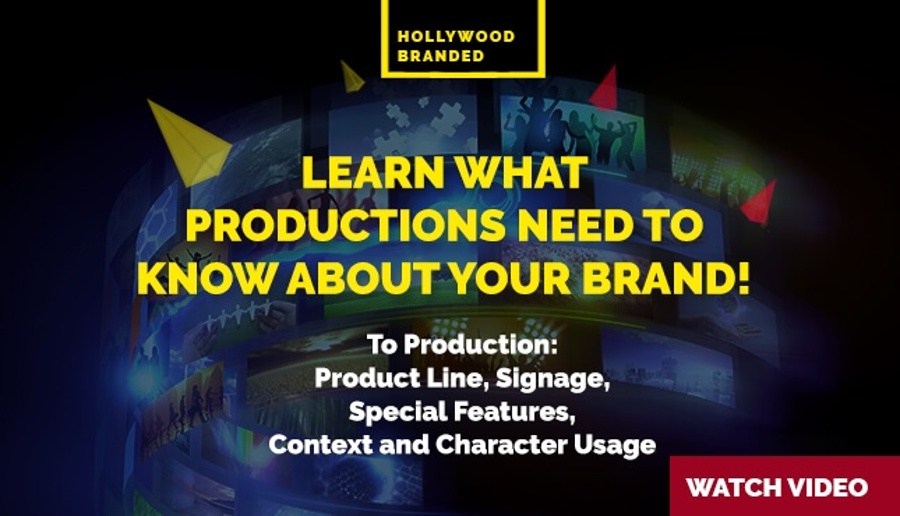Behind the Seams: The Brand-Building Power of Fashion in Entertainment
Table Of Contents
when film and fashion connect, trends emerge
The partnership between fashion and film has been a love story for the ages - one that continues to captivate audiences and redefine how we think about style. Whether it’s Audrey Hepburn’s iconic little black dress in Breakfast at Tiffany's or Keanu Reeves’ gravity-defying trench coat in The Matrix, movies have done more than entertain us.
Costume designers, directors, and even the brands themselves know the power of the big screen. Fashion in film isn’t just eye candy - it’s storytelling, it’s aspirational, and often, it’s a brand’s golden ticket to cultural relevance. In this article, Hollywood Branded dives into the magic of this relationship, from its glamorous history to its shoppable future.
.png?width=500&height=281&name=Teris%20bonus%20blog%20-%202024%20(1).png)
THE HISTORY OF FASHION IN FILM
Fashion in cinema didn’t start yesterday. During Hollywood’s golden age, stars like Greta Garbo and Marlene Dietrich lit up the screen in jaw-dropping gowns and tailored suits, creating unforgettable fashion moments. Iconic costume designers like Edith Head and Adrian turned Hollywood into a runway of timeless style that still influences what’s chic today.
 Photo Credit: Getty
Photo Credit: Getty
Back then, fashion was all about creating larger-than-life personas. Glamorous wardrobes elevated stars into symbols of elegance and sophistication. But as movies evolved, so did fashion’s role. Clothes became more than just an accessory; they became a character’s secret weapon, revealing their personality, social standing, and even their inner struggles. That’s the kind of layered storytelling that keeps us hooked.
fashion as a narrative tool
Think about Breakfast at Tiffany’s. Audrey Hepburn’s black Givenchy dress paired with oversized sunglasses and a pearl necklace wasn’t just an outfit; it was a vibe. It captured her character Holly Golightly’s aspirational, glamorous lifestyle while hinting at her vulnerability. That image of her standing outside Tiffany’s, coffee in hand, has become one of the most iconic in cinematic history. And guess what? It was fashion that told half the story.
This partnership between Hepburn and designer Hubert de Givenchy set the gold standard for how fashion can elevate a film. Today, we see countless collaborations between designers and filmmakers, all aiming to capture that same magic.
 Photo Credit: Getty
Photo Credit: Getty
launching new fashion brands
Fast forward to today, and the power of film to shape fashion is more potent than ever. Consider The Devil Wears Prada. This movie wasn’t just an inside look at the high-stakes world of fashion magazines; it was also a showcase for both established and up-and-coming designers. Costume designer Patricia Field turned every scene into a runway, introducing viewers to luxury brands and edgy trends.
But it doesn’t stop there. Some films have gone beyond showcasing designers to launching entire fashion brands. Black Panther is a perfect example. Ruth E. Carter’s Afro-futuristic designs didn’t just set the tone for the movie - they became a cultural phenomenon. The costumes inspired collaborations with designers and new clothing lines, proving that when storytelling and fashion align, magic happens.
 Photo Credit: Marvel Studios
Photo Credit: Marvel Studios
resurrecting legacy brands
Movies aren’t just about discovering the new; they’re also brilliant at bringing back the old. Take Top Gun. Tom Cruise’s aviator sunglasses single-handedly reignited the Ray-Ban craze, boosting sales by 40%. Or consider The Matrix, which transformed the trench coat into a must-have item for anyone wanting to channel futuristic cool. These films didn’t just make these brands trendy again - they solidified their spot in pop culture history.
For legacy brands, landing the right movie placement can mean the difference between fading away and becoming a timeless icon. And who doesn’t want that?
 Photo Credit: Getty Images
Photo Credit: Getty Images
from fiction to reality: brands inspired by film
Sometimes, movies create fictional fashion brands that audiences love so much, they become real. Take Kingsman: The Secret Service. The film’s sharp, tailored suits were so popular that a real-life Kingsman menswear line was launched. Fans could finally dress like their favorite spies...minus the secret gadgets. 😊
And let’s not forget Sex and the City. Carrie Bradshaw’s obsession with Manolo Blahnik turned the brand into a household name. Suddenly, owning a pair of Manolos wasn’t just about style - it was about being part of the cultural zeitgeist. These examples show how film can blur the lines between fiction and reality, transforming costumes into coveted fashion statements.
 Photo Credit: HBO
Photo Credit: HBO
the role of product placement
When it comes to fashion, product placement can create moments that live rent-free in our minds. Think James Bond’s Omega watches or his perfectly tailored suits. These aren’t just accessories; they’re symbols of sophistication and adventure. And let’s be real - who doesn’t want a little bit of Bond in their life?
Luxury brands know this, which is why they invest heavily in the right placements. The Devil Wears Prada didn’t just feature Prada; it was practically a love letter to luxury fashion. For these brands, the right movie cameo can transform them into symbols of aspiration and desire.
 Photo Credit: Medium
Photo Credit: Medium
THE FUTURE OF FASHION AND FILM
Now let’s talk about the future, where fashion meets tech in ways we’ve only dreamed of. Streaming platforms like Amazon Prime and Netflix are already experimenting with shoppable content, where you can click on a character’s outfit and buy it instantly. How great is it to watch your favorite show, fall in love with a jacket, and own it before the credits roll? Talk about instant gratification!
And it doesn’t stop there. Augmented reality (AR) and virtual reality (VR) are taking things to the next level. Picture this: you’re watching a movie, and through your phone or AR glasses, you can try on the exact dress the lead actress is wearing. It’s like a virtual fitting room in the palm of your hand.
These innovations are bridging the gap between the reel and the real, making it easier than ever for audiences to incorporate cinematic fashion into their wardrobes. For brands, this is a chance to turn on-screen exposure into immediate sales. For consumers, it’s the ultimate shopping experience. The future of fashion and film isn’t just about watching - it’s about participating.
Fashion in film is so much more than clothes on a screen. It’s a cultural phenomenon, a storytelling device, and a marketing powerhouse all rolled into one. Whether it’s launching new brands, resurrecting old ones, or making fictional labels a reality, the synergy between fashion and film is unmatched. As viewers, we’re not just watching stories unfold, we’re being inspired, influenced, and even given the tools to bring a little movie magic into our own lives.
Eager To Learn More?
If you’re fascinated by the powerful connection between film and fashion, check out these articles that dive even deeper into how Hollywood influences style trends and brand success:
- The Most Stylish Movies and What We Can Learn From Them
- The Art of Product Placement: How Luxury Brands Benefit From Movie And TV Appearances
- The Top Fashion Brands In TV Series
- Licensed Product Lines From Film & TV
- The Power of Product Placement in Emily in Paris
Want to stay in the know with all things pop culture? Look no further than our Hot in Hollywood newsletter! Each week, we compile a list of the most talked-about moments in the entertainment industry, all for you to enjoy!







